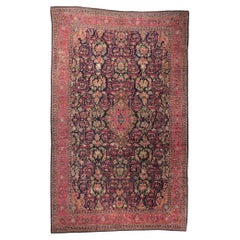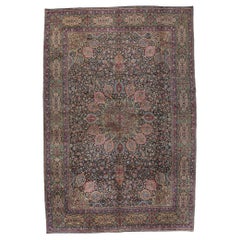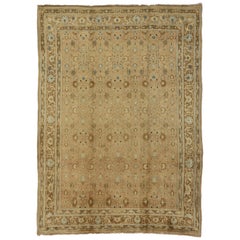Revival Rugs and Carpets
Early 20th Century Persian Revival Rugs and Carpets
Wool
Early 20th Century Persian Revival Rugs and Carpets
Wool
Mid-20th Century Persian Revival Rugs and Carpets
Wool
Early 20th Century Persian Revival Rugs and Carpets
Wool
1890s Persian Antique Revival Rugs and Carpets
Wool
Mid-20th Century Persian Revival Rugs and Carpets
Wool
Early 20th Century Persian Revival Rugs and Carpets
Wool
2010s Indian Revival Rugs and Carpets
Silk
2010s Chinese Revival Rugs and Carpets
Wool
Early 20th Century Turkish Revival Rugs and Carpets
Wool
1890s French Antique Revival Rugs and Carpets
Wool
Mid-20th Century Persian Revival Rugs and Carpets
Wool
21st Century and Contemporary Turkish Revival Rugs and Carpets
Wool, Natural Fiber, Organic Material
Mid-20th Century Turkish Revival Rugs and Carpets
Wool
1990s Egyptian Revival Rugs and Carpets
Wool, Cotton, Organic Material
1960s Turkish Vintage Revival Rugs and Carpets
Wool, Cotton, Organic Material
21st Century and Contemporary Turkish Revival Rugs and Carpets
Wool, Natural Fiber, Organic Material
21st Century and Contemporary Turkish Revival Rugs and Carpets
Wool, Natural Fiber, Organic Material
21st Century and Contemporary Turkish Revival Rugs and Carpets
Wool, Natural Fiber, Organic Material
21st Century and Contemporary Turkish Revival Rugs and Carpets
Wool, Natural Fiber, Organic Material
21st Century and Contemporary Turkish Revival Rugs and Carpets
Wool, Natural Fiber, Organic Material
21st Century and Contemporary Turkish Revival Rugs and Carpets
Wool, Natural Fiber, Organic Material
2010s Chinese Revival Rugs and Carpets
Silk
Early 20th Century Persian Revival Rugs and Carpets
Wool
19th Century Turkish Antique Revival Rugs and Carpets
Wool
21st Century and Contemporary Turkish Revival Rugs and Carpets
Wool, Natural Fiber, Organic Material
21st Century and Contemporary Turkish Revival Rugs and Carpets
Wool, Natural Fiber, Organic Material
21st Century and Contemporary Turkish Revival Rugs and Carpets
Wool, Natural Fiber, Organic Material
21st Century and Contemporary Turkish Revival Rugs and Carpets
Wool, Natural Fiber, Organic Material
Early 20th Century Persian Revival Rugs and Carpets
Wool
2010s Chinese Revival Rugs and Carpets
Wool, Silk
21st Century and Contemporary Turkish Revival Rugs and Carpets
Wool, Natural Fiber, Organic Material
21st Century and Contemporary Turkish Revival Rugs and Carpets
Wool, Natural Fiber, Organic Material
21st Century and Contemporary Turkish Revival Rugs and Carpets
Wool, Natural Fiber, Organic Material
2010s Chinese Revival Rugs and Carpets
Wool, Silk
21st Century and Contemporary Turkish Revival Rugs and Carpets
Wool, Natural Fiber, Organic Material
2010s Chinese Revival Rugs and Carpets
Wool
2010s Afghan Revival Rugs and Carpets
Wool
21st Century and Contemporary Turkish Revival Rugs and Carpets
Wool, Natural Fiber, Organic Material
2010s Turkish Revival Rugs and Carpets
Wool, Natural Fiber, Organic Material
21st Century and Contemporary Turkish Revival Rugs and Carpets
Wool, Natural Fiber, Organic Material
21st Century and Contemporary Turkish Revival Rugs and Carpets
Wool, Natural Fiber, Organic Material
21st Century and Contemporary Turkish Revival Rugs and Carpets
Wool, Natural Fiber, Organic Material
21st Century and Contemporary Turkish Revival Rugs and Carpets
Wool, Natural Fiber, Organic Material
20th Century Turkish Revival Rugs and Carpets
Wool
21st Century and Contemporary Turkish Revival Rugs and Carpets
Wool, Natural Fiber, Organic Material
21st Century and Contemporary Turkish Revival Rugs and Carpets
Wool, Natural Fiber, Organic Material
20th Century Turkish Revival Rugs and Carpets
Wool
21st Century and Contemporary Turkish Revival Rugs and Carpets
Wool, Natural Fiber, Organic Material
21st Century and Contemporary Turkish Revival Rugs and Carpets
Wool, Natural Fiber, Organic Material
20th Century Turkish Revival Rugs and Carpets
Wool
21st Century and Contemporary Turkish Revival Rugs and Carpets
Wool, Natural Fiber, Organic Material
Early 20th Century Turkish Revival Rugs and Carpets
Wool
21st Century and Contemporary Turkish Revival Rugs and Carpets
Wool, Natural Fiber, Organic Material
21st Century and Contemporary Afghan Revival Rugs and Carpets
Wool
21st Century and Contemporary Turkish Revival Rugs and Carpets
Wool, Natural Fiber, Organic Material
21st Century and Contemporary Turkish Revival Rugs and Carpets
Wool, Natural Fiber, Organic Material
21st Century and Contemporary Turkish Revival Rugs and Carpets
Wool, Natural Fiber, Organic Material
21st Century and Contemporary Turkish Revival Rugs and Carpets
Wool, Natural Fiber, Organic Material
21st Century and Contemporary Turkish Revival Rugs and Carpets
Wool, Natural Fiber, Organic Material





